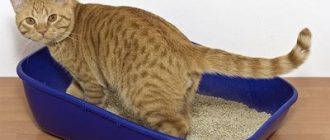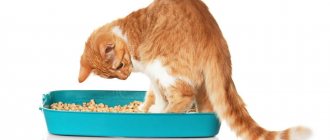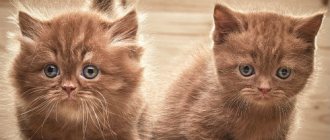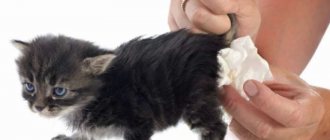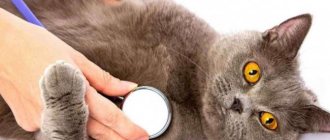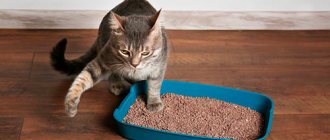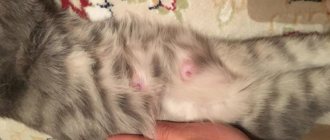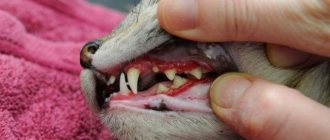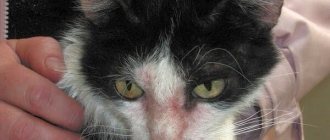Mucus is a thick, slippery substance that is produced in various human organs. In the intestines, it is needed to moisturize the mucous membrane and ensure the free passage of feces. Therefore, a small amount of mucus in the stool is not a cause for concern. But an increase in the amount of mucus, especially in combination with other symptoms, may indicate certain diseases of the digestive tract. Sometimes this is how malignant tumors manifest themselves.
- Causes of mucus in stool
- Symptoms to look out for when you have mucus in your stool
- What diseases cause mucus to appear in stool?
- In what cases should you consult a doctor?
- Examination for the appearance of mucus in the stool
What diseases cause mucus to appear in stool?
Irritable bowel syndrome is a functional disorder when there are no pathological formations in the intestine, but its functioning is disrupted. The main manifestation is constipation, diarrhea, or alternating between them. The appearance of such a symptom as mucus in the stool is also very typical.
Crohn's disease is a chronic inflammatory disease that can be severe and lead to the development of malignant tumors. The lesion can spread to all parts of the digestive tract - from the oral cavity to the rectum. At the same time, mucus is often present in feces.
Ulcerative colitis also belongs to the group of inflammatory bowel diseases and leads to the formation of ulcers on the mucous membrane. They bleed, secrete pus and mucus - all these impurities are present in the stool. Other characteristic symptoms of the disease: pain and cramps in the abdomen, diarrhea.
Proctitis is inflammation in the rectum. It develops as a result of various infections (including sexually transmitted infections), injuries, hemorrhoids, and inflammatory bowel diseases. Mucus in the stool is one of the characteristic symptoms.
Pseudomembranous colitis is a severe infectious disease that affects the rectum. It is caused by the microorganism clostridioides difficile, usually after the normal intestinal flora has been destroyed by antibiotics. Pseudomembranous colitis can cause severe, even life-threatening diarrhea, and the stool is foul-smelling and contains a lot of mucus.
Food poisoning usually manifests itself as flu-like symptoms, blood, and large amounts of mucus in the stool. It usually goes away within a few days, but in some cases it can be serious.
Intestinal infections and helminths can also lead to mucus in the feces.
Colon and rectal cancer. The leading symptom of the disease is blood in the feces. But mucus may also appear.
Anal fistulas or rectal ulcers . Ulcers are defects in the mucous membrane, and fistulas are pathological communications between the intestine and the surface of the skin. In both cases, the stool often has an unpleasant odor, and mucus is released in large quantities.
Allergic colitis most often occurs in young children as a reaction to cow's milk. In this case, feces often contain a lot of mucus.
Visit to the veterinarian
Since the presence of mucus in a cat's stool can be caused by many reasons, the true diagnosis can only be determined by a veterinarian. Therefore, a visit to the doctor should not be delayed, otherwise the disease may reach a severe stage.
Having determined why the stool comes out with mucus, the specialist will prescribe therapy appropriate to the identified disease. The cat will be prescribed special medications, and the owner will be given recommendations for treatment and care. All this must be done in strict order.
If the cat's owner is sure that the cause of mucus in the feces lies not in a serious illness, but in a banal disorder due to inappropriate food or the consequences of deworming, you can try to help the pet at home:
- Give the cat a therapeutic fast (fasting for 12 or 24 hours). In this case, it is necessary to drink your pet with clean water.
- If the animal refuses to drink, you will have to force it to do so. You will need to pour a small amount of water into the cat's mouth to avoid dehydration.
- If the cat has overeaten or is not seriously poisoned, give it activated charcoal every 6 hours.
- To normalize the intestinal microflora in case of food poisoning or mild disorder, you can give a children's dose of Smecta. This drug is one of the few human medications approved for use by animals (as is activated charcoal).
- As an astringent for minor causes of diarrhea, cats are given a decoction of oak bark to drink (after 1-2 times the diarrhea should stop).
© shutterstock
If the cat’s condition has not improved within 24 hours, the feces are still slimy, and the accompanying symptoms persist or increase, you cannot continue independent treatment. In this case, the pet must be urgently taken to a veterinarian, who will examine the patient, conduct diagnostics and determine how to treat the animal.
How to treat kittens
Small furry cats are treated slightly differently than adult cats.
Firstly, there should be no self-medication here . The owners do not have time to find out the cause of mucus in the kitten’s feces, because in a small body any disease develops faster and stronger than in an adult. The baby needs to be helped as soon as possible, and only a veterinarian can do this efficiently.
Examination for the appearance of mucus in the stool
To understand why mucus appears in the stool, the doctor may prescribe the following diagnostic methods:
- General blood analysis.
- Stool analysis is a coprogram.
- Analysis of stool for infections, helminth eggs.
- Fecal occult blood test.
- Colonoscopy is an endoscopic procedure during which the mucous membrane of the rectum and colon is examined using an instrument in the form of a thin flexible hose (colonoscope) inserted through the anus.
- Sigmoidoscopy is an endoscopic examination of the rectum and sigmoid colon.
- Endoscopic examination of the esophagus, stomach and duodenum.
- Video capsule endoscopy is an alternative to classical endoscopic examinations of the digestive tract. The patient is asked to swallow a small capsule containing miniature video cameras. This capsule will pass through the intestines, “inspect” its mucous membrane and leave the body naturally.
- CT, MRI.
Whatever disease causes mucus to appear in feces, it is better to diagnose it at an early stage. You can check the condition of your digestive organs using the comprehensive GIT program at the Euroonko clinic. This program includes all basic instrumental and laboratory diagnostic methods, as well as consultations with our leading medical specialists.
Book a consultation 24 hours a day
+7+7+78
The main causes of mucus
It's hard not to notice the deviation. Mucus in appearance resembles translucent or white viscous substances in feces. There may be a small amount of them, but it also happens that the discharge completely covers the cat feces. In each case, this is a signal to quickly contact a specialist, since pathological changes occur in the cat’s body. The appearance of mucus is caused by the following reasons:
- the appearance of worms;
- bacterial infections and diseases;
- binge eating;
- functional failure of the digestive system;
- fatty diet;
- stressful situations;
- allergic reactions of the body;
- wool in the gastrointestinal tract;
- reaction to medications;
- weakened immunity;
- a sharp change in the food menu;
- intoxication;
- clogged intestines.
A fatty diet in an animal can lead to such a disturbance in the appearance of feces.
All these various reasons contribute to a malfunction of the body, thereby causing mucus and scarlet blood in the cat’s stool. A person cannot influence their occurrence and it is almost impossible to independently determine why a kitten has foreign discharge and transparent ichor in its stool. However, with such impurities and additional symptoms, it is clearly noticeable that the animal is sick.
Treatment of the disease
There can be no self-medication when such symptoms are detected. After testing, medications and preventive measures are prescribed to cure the disease. On the first day, it is recommended to unload the body from food; only water is allowed. Further, the following drugs are used for each ailment separately:
- Viral infections. Treat with subcutaneous injection of antiviral serum.
- Bacterial diseases. Only antibiotic therapy will help.
- Poisoning and intoxication. The medication "Atoxil" is prescribed.
- Worms. Antihelminthic drugs solve this problem.
- Intestinal microflora disorders. Probiotics are needed for a course of at least 10 days.
- Spasms. Antispasmodic drugs are prescribed, especially for acute pain.
After treatment, cats easily return to normal, and the functioning of the intestines and esophagus improves. The animal goes to the toilet painlessly, for the most part, it does not secrete white mucus and there is no transparent ichor in the impurities. To summarize, we can say that blood and mucus in a cat’s stool are considered pathological secretions and signal the development of the disease. This cannot be left to chance; you must consult a specialist if additional symptoms appear.
Diagnostic techniques
To understand what exactly happened and why your pet has diarrhea with mucus and blood, veterinarians use complex diagnostic tests:
- Carrying out blood and urine tests.
- Microscopic examination of stool. This method is used for suspected helminthic infestations and protozoal infections.
- X-ray and ultrasound examination of the abdominal cavity.
- In complex and doubtful cases, examination of scrapings from the intestinal walls is useful. They are obtained during endoscopy.
- It will probably be necessary to inoculate the resulting samples on nutrient media, since using this technique it is possible to accurately determine the type of pathogen, which is important when further prescribing treatment.
Basic tests as a diagnostic method
In order to diagnose the disease, the veterinarian may be interested in:
- The cat's attempts to rub its butt on the carpets. This behavior indicates an existing problem with the anal sinuses.
- Injuries, blows, bites in this area. May cause great discomfort for the animal.
- Detailed description of your pet's diet.
- Swallowed objects, ingestion of spoiled food.
If the doctor needs to clarify something, the animal may be sent for an x-ray.
Upon receipt of all the answers of interest, the veterinarian immediately makes a diagnosis or prescribes additional procedures. So, he can send the cat for feces, urine, blood, and examination of the rectum by swallowing a probe under anesthesia. By analyzing the profile of chemical elements in the bloodstream, it is possible to understand what is happening in the body. Colonoscopy and x-rays of organs are performed as prescribed by the doctor. As a result of receiving answers, effective and efficient treatment of the disease is selected.
Transparent mucus from the anus of a kitten
Just like people, cats often become victims of various diseases. Therefore, if your cat has anal discharge or any other suspicious symptoms, you should attach great importance to this.
The important thing here is to take action in time and seek the help of specialists. Only a doctor can accurately determine the cause of the discharge, identify the disease and give recommendations for treatment.
Causes of discharge from the anus
Discharge in a cat during diarrhea or constipation is quite normal and quite common. They manifest themselves in different ways, but are fairly easy to identify, so they are not too dangerous. The owner may also notice a small amount of blood clots in them. This symptom disappears completely with complete recovery. Therefore, you should not worry too much about this.
But if the discharge from either the anus in a cat or the vaginal area in a cat is purulent or mucous in nature and has a characteristic odor, we can talk about the presence of an infection.
Often this can be associated with problems with the genital organs of cats. But there are other options that require careful testing, special tests and smears. Here you should seek the help of a specialist as soon as possible so as not to aggravate the situation and alleviate the cat’s suffering.
Often the cause of discharge from the anus is inflammation of the paraanal glands. Previously, many were inclined to think that such problems were directly related to the abundant use of dry food in the diet of pets. However, it turned out that this is a myth.
Often, discharge appears due to the unusual structure of the intestine itself. For example, you may notice frequent attempts by the animal to sit on its hind legs or walk along the floor.
Such manifestations of attempts to get rid of excess secretions should be immediately noticeable to the owner.
Treatment of anal discharge
But many pet owners do not want to resort to the services of veterinary clinics. Of course, if the owner is absolutely confident in his abilities and is fully aware of the situation that is happening to his cat, more independent treatment is allowed. However, beginners should listen to the opinion of doctors so as not to put their cat at risk.
Sometimes it is not so easy to rid a cat of discharge from the anus. If the abundance of secretion does not decrease and lasts for several days, an examination should be performed.
Here you must thoroughly wash and disinfect your hands. Next, you need to squeeze the area adjacent to the animal’s sphincter with two fingers.
To avoid worsening the situation, a whole range of measures should be taken to help correct the cat’s condition. Initially, you should arm yourself with special medical gloves. After smearing your finger with Vaseline, you need to insert it into the source of the cat’s discharge.
Carrying out manipulations according to the instructions will lead to an improvement in the pet’s condition within 2-3 days.
However, this procedure cannot be performed without special skills and a full understanding of what is happening. The best thing is to trust the professionals at the veterinary clinic, who will professionally take care of the animal’s health.
If your cat is bleeding from the anus, this may be a reason for surgery. However, this is an extreme measure that is carried out quite rarely.
Often less radical methods of treatment are sufficient, even if it involves bleeding.
After the cat’s condition improves, you should consult a doctor about preventing discharge. This will avoid relapses and improve the cat’s overall condition. Only compliance with the doctor's instructions can prevent the worsening of chronic diseases and the recurrence of inflammatory processes. He can give advice related to:
- cat care; food; routine examinations of the animal.
It's a shame when your beloved pet gets sick. Especially when the kitten has discharge from his butt. However, the main goal, in this case, should be a directed and productive fight against the disease.
Timely measures can not only alleviate the cat’s condition, but also quickly save it from a dangerous disease.
Therefore, most owners try to make every effort to create favorable conditions for their beloved animal to recover.
When should you see a doctor?
If an animal with such a symptom begins to look sick, then it needs a visit to the doctor.
Important symptoms are also vomiting, blood streaks in the stool, frequent diarrhea, frequent urination, increased thirst, increased body temperature, unhealthy appearance, complete or partial refusal to eat. It is recommended to monitor the cat's condition for the first few days. If the situation does not change and all the symptoms persist or develop with renewed vigor, then you must definitely contact your attending veterinarian in order to get tested and prescribe the appropriate treatment for your furry pet.
Diarrhea of infectious etiology
Bacterial infections pose a great danger to the health and life of every kitten:
- Campylobacteriosis. This is a zoonotic bacterial pathology that often affects kittens less than six months old. The infection is transmitted through direct contact with sick animals, as well as through consumption of food and water contaminated with the pathogen.
- Pathogenic strains of E. Coli, that is, common Escherichia coli. The general name of such pathologies is escherichiosis. They are extremely dangerous, since some strains have a hemolytic effect, causing not only diarrhea, but also multiple intestinal bleeding.
In addition, gray mucous diarrhea is a fairly characteristic sign of salmonellosis. Like campylobacteriosis, the infection is transmitted by eating poor quality food. It is severe and the likelihood of death is very high. In addition to bacterial infections, various viral infections often lead to the development of diarrhea. Diarrhea is most typical for rotavirus, as well as infectious enterocolitis.
How to recognize?
The manifestation of the following symptoms indicates the following diseases:
- If a cat poops mucus, this is a consequence of exceeding the dose of vitamins.
- Bloating and loose stools in your pet indicate intolerance to certain foods in the diet.
- Lumps of mucus in diarrhea, vomiting, and weight loss indicate inflammatory processes in the gastrointestinal tract.
- Loose stools with white inclusions, weakness, lethargy, nausea, discharge from the eyeballs and nose indicate that a viral infection is spreading throughout the body.
- Modified feces with mucus, restlessness of the pet, pain in the abdominal area are considered the main symptoms of colitis or enteritis.
- Feces acquire a pungent, stinking odor, and there is mucus and blood present—signaling inflammation or oncology.
- Liquid stool consistency with dark streaks, vomiting, and rapid loss of body weight indicate the presence of worms in the body.
- If the feces have acquired green or yellow shades, increased appetite, flatulence, bloating - reasons to check the condition of the cat's pancreas.
Only if your pet takes antihelminthic medications can you not worry about mucus in the stool. This sign is not considered a pathology and may persist for the first few days after the procedure. The cat goes to the toilet this way simply because its body is cleaning itself.
Mucus with blood and other pathologies
Nausea in a cat indicates the presence of an infection.
Small bloody spots with mucus accompanied by nausea and vomiting, loss of appetite, and intense weight loss indicate the presence of a viral or bacterial infection.
- Liquid stools that are green or deep yellow in color and greasy in nature are a sign of pancreatic disease. Associated symptoms are periodic release of gases, nausea, vomiting, increased appetite during exhaustion.
- A sharp, unpleasant odor of liquid, mucous stool indicates the possible growth of a cancerous tumor or severe intestinal inflammation.
- Excessively light, almost colorless stool may be present in diseases of the liver and biliary tract.
- Digestive dysfunction manifests itself in the occurrence of grayish diarrhea with a strong putrefactive odor.
- Feces of a watery consistency will be released when the absorption function in the intestines fails.
If there are no accompanying symptoms, this is almost always a sign of overfeeding.
Help methods
The appearance of the first signs requires restricting the pet’s food for a period of 24 hours.
Water for the cat should be freely available.
- Water must be freely available, and hunger must be fully tolerated.
- At the same time, if the animal has no desire to drink, it must be force-fed, often and in small portions to avoid dehydration.
- If the cause is ordinary overeating or mild poisoning, the use of activated carbon will be acceptable help. Half the tablet should be dissolved in water and given to the patient every six hours.
- It is recommended to prescribe smecta and use it in children's doses.
- A good remedy would be oak bark in the form of a decoction as an astringent. As a rule, after the first necessary help, diarrhea stops.
- If this does not happen, you should immediately consult a doctor to establish a complete clinical picture and make an accurate diagnosis.
